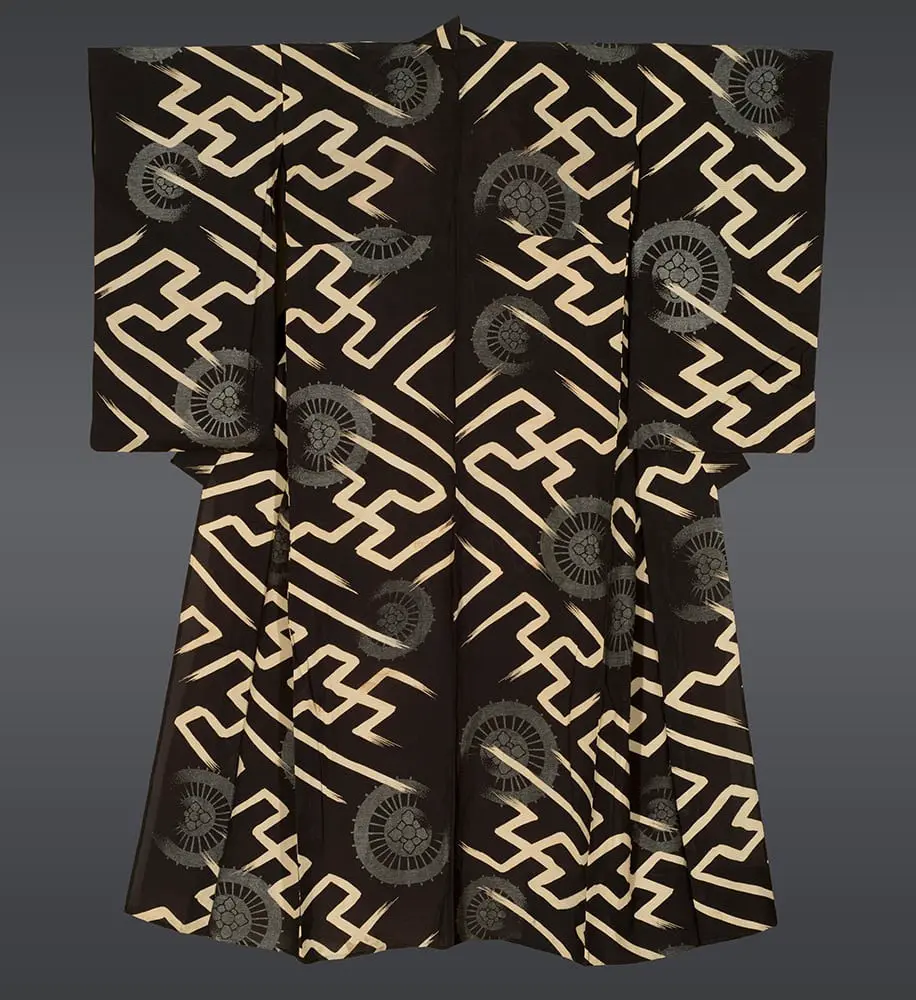This kimono features two traditional motifs rendered with striking modernist clarity against a deep black ground. The joined-swastika pattern, known as tsunagi manji in Japanese design terminology, represents an ancient Buddhist symbol of good fortune and eternal cycle that had been used in Japanese decorative arts for centuries before its appropriation by European political movements. Here, the interlocking cream-colored forms create a dynamic maze-like pattern that speaks to the period's fascination with geometric repetition and visual rhythm, while the scattered waterwheel motifs add punctuation points throughout the composition.
The artistic approach reflects the broader international embrace of geometric abstraction during the 1920s and 1930s, where traditional symbols were being reinterpreted through the lens of modernist design principles. The bold contrast between the cream geometric forms and the black ground creates a graphic intensity that parallels Art Deco's love of stark visual drama, while the mathematical precision of the interlocking pattern suggests the influence of constructivist and Bauhaus design philosophies. The use of sheer ro gauze adds another layer of sophistication, creating subtle transparency effects that would have been particularly striking when worn.
The detailed views reveal the extraordinary technical mastery involved in creating the waterwheel motifs, where silver threads have been meticulously inserted to form these circular patterns without appearing on the reverse side of the fabric. This invisible technique demonstrates the period's commitment to technical innovation alongside aesthetic modernization, creating effects that appear almost magical in their execution.
Staining is present on the inside, not visible when worn or displayed. It measures 49 inches (124 cm) from sleeve-end to sleeve-end and stands at 61 inches (155 cm) in height.
.avif)













